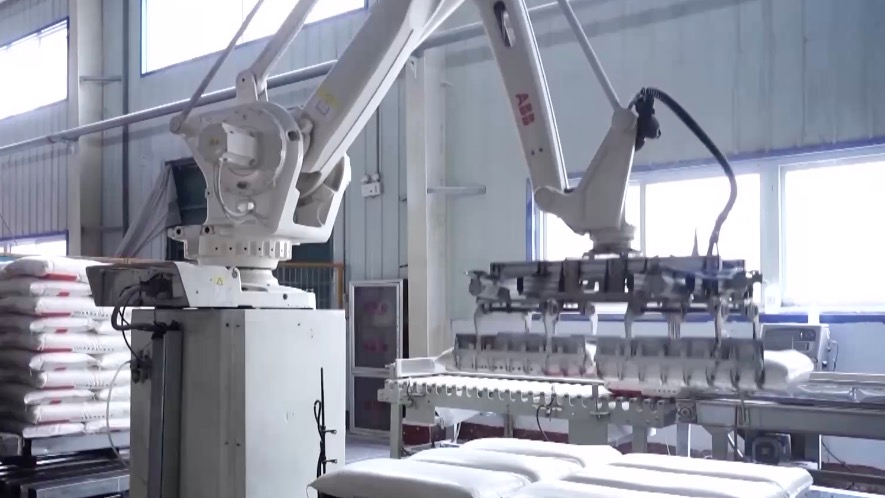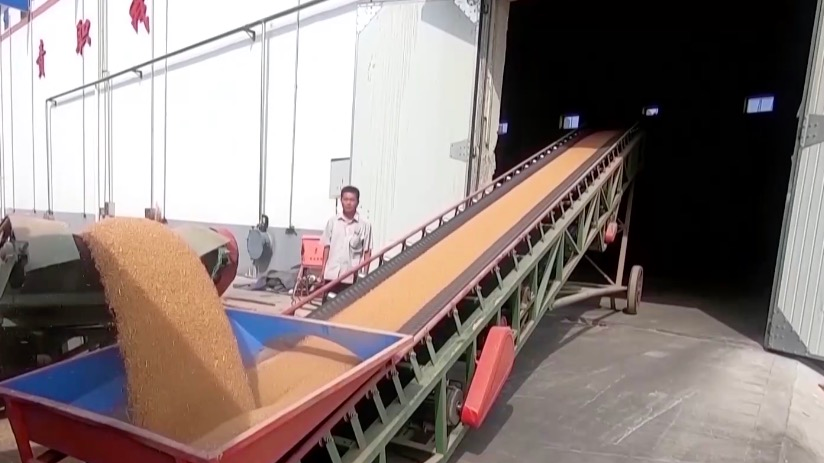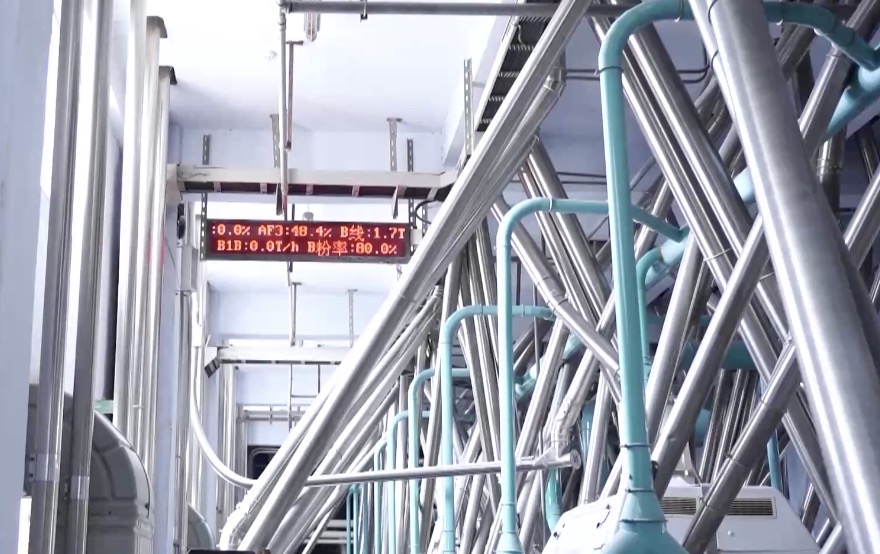
Robotic palletizers working in a wheat processing factory in Wucheng County, Dezhou City, east China's Shandong Province. /CMG
Robotic palletizers working in a wheat processing factory in Wucheng County, Dezhou City, east China's Shandong Province. /CMG
Autumn remains the busiest time of the year for Liu Shihai, a grain grower in Wucheng County, located in Dezhou City, eastern China's Shandong Province.
During this period, as flour consumption transitions from the off-season to its peak, Liu is occupied with the transportation and sale of his wheat to a local wheat processing factory.
Enhanced efficiency in wheat procurement and transportation
This year's grain sales experience is different from previous years, with the process of selling grain to wheat processing factories becoming much more convenient.
Farmers can now make reservations using their mobile phones. Once a small QR code is generated, the entire process, from sampling and testing to weighing and grain unloading, is seamlessly managed through a digital platform.
"In the past, the waiting time for transporting grain to the factory could be quite lengthy, especially during adverse weather conditions, which risked the food getting wet on the way," said Liu Shihai.
With the latest digital system, Liu Shihai can schedule the unloading of wheat from his truck at home, before embarking on the journey to the factory.
"This approach reduces waiting times and unnecessary trips, saving both time and food resources," said Liu.
Apart from Shandong Province, many provinces across China like Hunan, Heilongjiang, and Anhui have launched reservation services for grain testing and procurement, enhancing the efficiency of farmers' grain sales and providing them with a secure, automated, and intelligent process.
This transformation not only offers farmers greater convenience in selling their grain but also reduces labor costs for businesses, ultimately benefiting local factories.

Flat conveyors used in a wheat processing factory in Wucheng County, Dezhou City, east China's Shandong Province. /CMG
Flat conveyors used in a wheat processing factory in Wucheng County, Dezhou City, east China's Shandong Province. /CMG
Once wheat enters the factory, it undergoes warehousing, grading, and storage procedures, with loading and unloading operations primarily reliant on manual labor. The central challenge lies in preventing grain from getting scattered and damaged.
In the traditional grinding processes, a 0.02 percent damage rate is very usual, meaning that 0.02 grains of wheat out of every 100 are damaged, according to Li Xifeng, a staff member at a local processing factory in Shandong.
The implementation of flat conveyors facilitate the efficient transportation of grains and effectively avoid damage.
Now damage rate of grains can be reduced to zero, Li says.

The flour is transported to bulk storage warehouse through a chain conveyor system operating under negative pressure. /CMG
The flour is transported to bulk storage warehouse through a chain conveyor system operating under negative pressure. /CMG
Technology advancement facilitates wheat processing
Significant transformations have taken place in the wheat processing procedures, particularly in the fine powder grinding workshops.
In the past, these areas demanded the labor of over a dozen employees who had to wear dust masks and protective clothing while at work.
Now, this place has become an unmanned workshop that do not need human labor, thanks to pipe chain conveyor.
After wheat undergoes grinding and sifting, the flour is seamlessly transported to bulk storage warehouse through a chain conveyor system operating under negative pressure.
In addition, the process is further enhanced with the collaborative operations of pulse dust collectors, robotic palletizers, flour packaging machines.
For instance, robotic palletizers efficiently stack bags or containers of wheat products onto pallets with precision and care, minimizing the risk of spillage and waste. By automating the palletizing process, they enhance the overall efficiency of wheat handling and reduce grain losses.
Also, the use of flour packaging machines enables precise packaging. This not only reduces product loss but also ensures that every ounce of wheat is used efficiently, thereby promoting a more sustainable and resource-efficient flour production process.
"Previously, we employed manual packaging methods, resulting in big flour spillage," said Yang Ruishuang, director of the quality control department of Wucheng County.
"The daily flour production of 20,000 bags led to the downgrading of approximately 20 bags per month, equivalent to roughly 20 tonnes of waste. Now the waste has been reduced significantly during the process," he said.